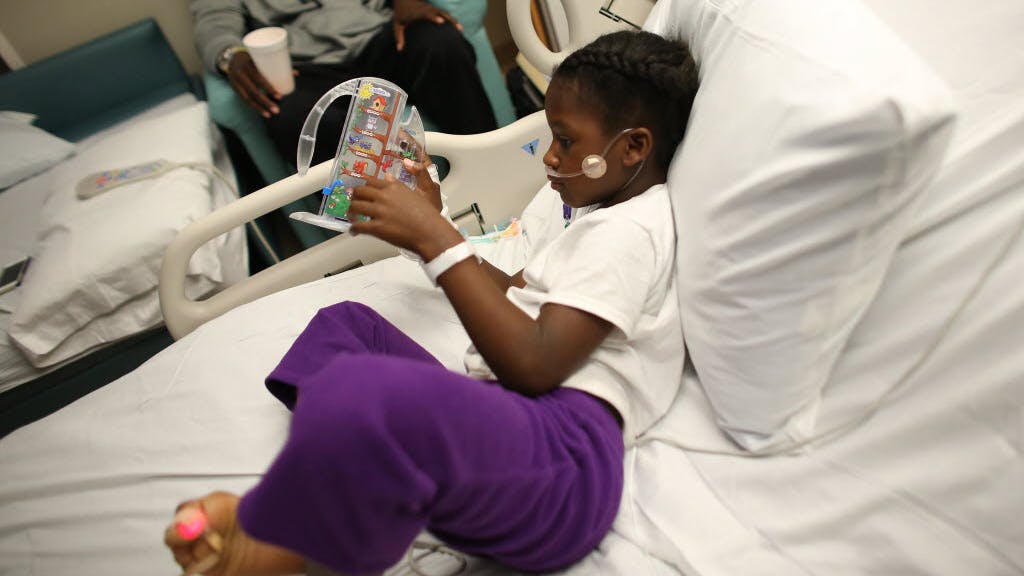An unusually harsh strain of enterovirus has been detected in Minnesota and linked to a buildup of children suffering breathing problems and clogging pediatric hospitals, the state health department reported Wednesday.
Lab tests confirmed that enterovirus D68 had infected at least one Minnesota child, who received hospital care for respiratory illness and is now recovering at home. The state is among at least 13 where the virus has spread. More than 130 illnesses, all involving children in the United States, have been linked to the virus, which is an unusual strain that is typically associated with summer colds.
Beyond the state's official count of lab-confirmed enterovirus D68 cases, the University of Minnesota has confirmed through its own testing that it has treated 11 infected patients.
"Enterovirus is a common virus that right now is behaving uncommonly," said Patsy Stinchfield, a nurse practitioner and director of infection prevention and control at Children's Hospitals and Clinics of Minnesota.
The confirmed state test was in some ways a formality, given that pediatric hospitals in the Twin Cities have been flooded with children experiencing severe breathing problems over the past week. While state health testing also found infections linked to common strains of rhinovirus, adenovirus and respiratory syncytial virus, hospital officials suspected the dreaded strain of enterovirus was at work because of the surge of patients at an unusual time of year.
The University of Minnesota Children's Hospital is seeing respiratory illnesses at a rate usually only seen during influenza season. The Children's hospitals in Minneapolis and St. Paul have been averaging a combined total of around 300 children in inpatient care each day for the past week.
One-fourth of those children are suffering respiratory problems, and Children's chief nursing officer Roxanne Fernandes said there is little doubt they belong in hospital care.
"One little boy about 6 years old told me it was like having an elephant sitting on his chest," she said. "And so when you're having that much trouble breathing, we really want you to be here."
No deaths have been linked to the enterovirus outbreak nationally. Ages of hospitalized children have varied, but some of the more severe cases have involved children who have asthma.
None of the confirmed cases has involved adults, who Stinchfield said have likely developed immunity to the virus.
"The kids are most likely sharing it themselves," said Stinchfield, noting that basic measures such as washing hands and covering coughs are the best prevention methods.
Hospitals reported an increase in cases early last week, and since then the number of children being admitted for breathing problems has remained high and steady, said Dr. Cynthia Kenyon, an epidemiology supervisor for the Minnesota Department of Health.
The state's unique system of "sentinel" clinics, which routinely send in lab samples from sick children for testing, will enable a deeper study of this outbreak, Kenyon said.
Important questions linger. An increase in illnesses is common in September as children return to school and pass infections from one to another, but it's unclear why there have been so many infections involving enterovirus and other viruses this month. It's also unclear why the obscure D68 strain has emerged, and why it dropped like a bombshell in the Midwest. Outbreaks sometimes spread more gradually.
"When you're seeing an increase in kids who are going to the hospital with respiratory illness," Kenyon said, "you want to try to understand what is causing that."
Jeremy Olson • 612-673-7744
In heated western Minn. GOP congressional primary, outsiders challenging incumbent

Minnesota Sports Hall of Fame: A class-by-class list of all members

This retired journalist changed professional wrestling from Mankato

